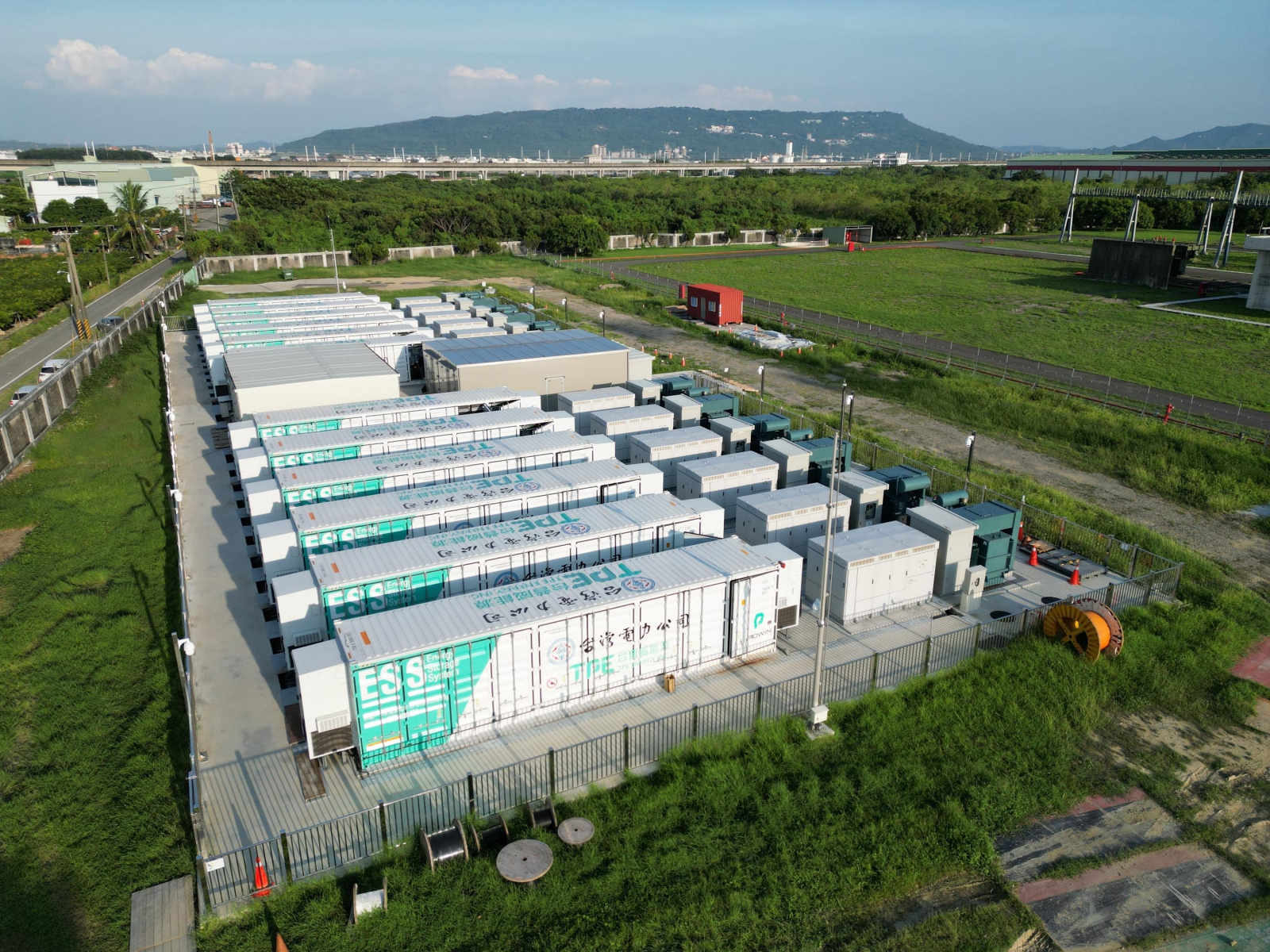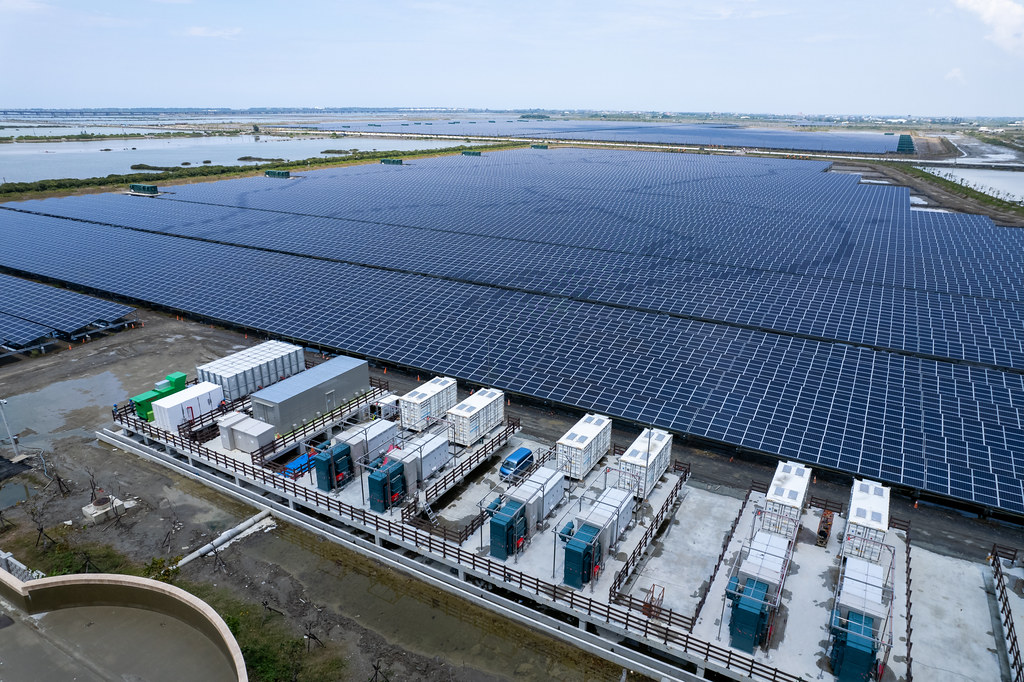
Taiwan's energy storage market is becoming increasingly risky and difficult to promote. Pictured is the energy storage system installed at the Luyuan Substation, which is Taiwan Power Company's first energy storage project. (Photo: TPE Energy)
Taiwan has recently witnessed a wave of cancellations in energy storage projects. Notable companies like Tung Ho Steel, North Star Petroleum, and Chia Hsin Cement have halted their storage plans within just over a month. What is driving this trend in Taiwan’s storage market?
Taiwan’s energy storage boom stumbles amid supply-demand imbalance
In April 2023, Tung Ho Steel, Taiwan’s largest rebar manufacturer, announced a NT$5.7 billion investment to build a 100 MW energy storage system in Miaoli. However, rising market risks led the company to cancel the project in late July 2024.
The following month, Green Free Energy, a subsidiary of North Star, canceled its NT$3.5 billion energy storage project in Taoyuan, and scrapped its procurement plan for storage equipment from Delta Electronics.
Just days later, Chia Hsin Cement's subsidiary TGIE terminated its land lease for an energy storage site in Kaohsiung, also ending the joint 50 MW storage project with Taiwan Cement.
The rapid exit is largely due to the severe oversupply in Taiwan’s energy storage market, said Huang Bing-hua (黃炳樺), general manager at Tung Ho Steel, adding that whether completed, under construction, or planned, storage projects across Taiwan far exceed demand from Taiwan Power Company (Taipower).
Taipower’s demand for both dynamic regulation reserve (dReg) and enhanced dynamic regulation reserve (E-dReg) is capped at 500 MW. However, dReg’s total capacity has reached 784.7 MW, surpassing the 2025 target. This oversupply has led to price crashes, with some projects bidding at zero cost.
The E-dReg trading capacity has reached 340 MW, excluding 738 MW of capacity under construction and 1,645 MW of procured batteries that have yet to be deployed.
To address the issue, Huang Po-yeh (黃柏曄), chief strategy officer at Aggr Energy, suggested introducing a demand curve for dReg, allowing for more flexible procurement, and sending reasonable price signals to avoid zero-fee bidding.
Taiwan's energy storage operators earn revenue through "capacity fees" and "efficiency fees." However, with dReg capacity fees dropping to zero, only performance fees remain, reducing revenue to just 30% of what it was before the price collapse.

To address the intermittency of solar and wind power, countries around the world have introduced energy storage solutions alongside renewable energy development. Pictured is Taipower's Tainan Yantian solar farm and its energy storage facilities. (Photo: Taipower)
Challenges beyond oversupply: Renewables lag and unfavorable electricity pricing
Taiwan’s energy storage sector faces two other challenges: a challenging environment for renewable energy deployment and a lack of economic benefits from the electricity pricing structure, said Huang.
Globally, countries are striving for net-zero emissions, promoting renewable energy paired with storage systems to address the intermittent nature of solar and wind power. However, Taiwan’s energy storage development has outpaced renewable energy installation. For solar energy, issues like land shortages and local opposition pose significant challenges.
Huang noted that not all renewable energy sources require electrochemical storage systems. Lithium-ion batteries, commonly used for short-term fast charging and discharging, may not be suitable for offshore wind power, which experiences significant seasonal variations in generation. Winter output can be five to nine times higher than in summer, making the use of energy storage for offshore wind power transfer infeasible with electrochemical batteries.
The high cost of battery storage systems is another major challenge. Investments in storage projects can run into tens or even hundreds of millions of dollars. While dReg capacities are usually for smaller projects of 5 MW or less, E-dReg projects often exceed 20 MW, 50 MW, or even 100 MW. Huang pointed out that the cost of storing and releasing one kilowatt-hour (kWh) of electricity can reach NT$3, not including maintenance, cooling, and land expenses. The minimal difference between peak and off-peak electricity prices in Taiwan further weakens the economic viability of storage investments.
Operators believe that without appropriate storage policies, Taiwan will struggle to cope with high renewable energy penetration. Huang said that Taiwan’s storage industry policies are often reactive rather than proactive, lacking long-term planning. Although the National Development Council aims for 3 GW of storage capacity by 2030, no interim targets for 2025 to 2030 have been established.
Energy storage system explained
- Enhanced Dynamic Regulation (E-dReg): E-dReg is an auxiliary service for energy transfer. This system stores electricity during the day and releases it in the evening, helping stabilize supply, particularly for solar power plants.
- Dynamic Regulation (dReg): dReg involves Automatic Frequency Control (AFC) or Automatic Generation Control (AGC) to perform bidirectional frequency regulation within one second, adjusting energy output or input to correct grid frequency.